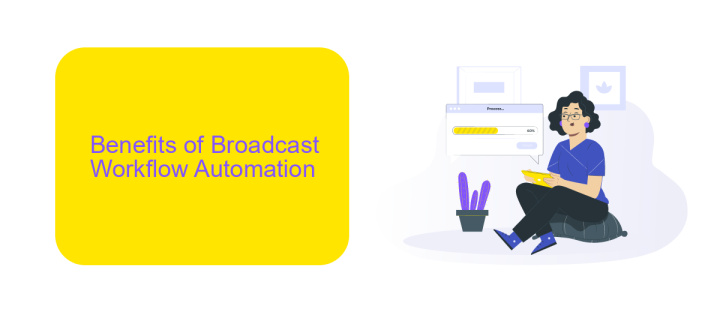Broadcast Workflow Automation
Broadcast Workflow Automation revolutionizes the way media content is managed, produced, and distributed. By integrating advanced technologies and streamlined processes, it enhances efficiency, reduces errors, and accelerates delivery times. This article explores the key components and benefits of automating broadcast workflows, offering insights into how media organizations can leverage these innovations to stay competitive in a rapidly evolving industry.
Introduction
Broadcast Workflow Automation is revolutionizing the way media content is managed and distributed. By streamlining various processes, it allows broadcasters to enhance efficiency, reduce manual errors, and improve overall productivity. This automation is particularly crucial in a rapidly evolving digital landscape where timely and accurate content delivery is paramount.
- Enhanced efficiency through automation
- Reduction of manual errors
- Improved productivity and time management
- Seamless integration with existing systems
One of the key components in achieving effective broadcast workflow automation is the integration of various services and platforms. Tools like ApiX-Drive facilitate these integrations by providing a user-friendly interface for connecting different applications and automating data transfers. This ensures that all components of the broadcasting workflow work in harmony, leading to a more streamlined and efficient process.
Benefits of Broadcast Workflow Automation

Broadcast workflow automation offers numerous advantages, significantly enhancing the efficiency and accuracy of broadcasting operations. By automating repetitive tasks, broadcasters can reduce the likelihood of human errors, ensuring seamless and consistent content delivery. This automation also frees up valuable time for staff, allowing them to focus on more strategic and creative aspects of broadcasting, thereby improving overall productivity and job satisfaction.
Moreover, integrating various systems and tools through services like ApiX-Drive can streamline workflows and facilitate real-time data exchange between different platforms. This integration not only simplifies the management of complex tasks but also provides a centralized control system, making it easier to monitor and adjust broadcasting processes as needed. Ultimately, broadcast workflow automation leads to cost savings, improved quality of service, and the ability to adapt quickly to changing market demands.
Key Considerations for Implementation

Implementing broadcast workflow automation requires careful planning and consideration to ensure a seamless transition and optimal performance. Key factors to consider include system compatibility, scalability, and integration capabilities.
- System Compatibility: Ensure that the chosen automation tools are compatible with existing infrastructure and software. This minimizes disruptions and reduces the need for extensive modifications.
- Scalability: Select solutions that can grow with your needs. As your broadcasting operations expand, the automation system should be able to handle increased workloads without compromising performance.
- Integration Capabilities: Utilize services like ApiX-Drive to facilitate seamless integration between various software and systems. This ensures a cohesive workflow and reduces manual intervention.
By addressing these key considerations, organizations can effectively implement broadcast workflow automation, leading to enhanced efficiency, reduced errors, and improved overall performance. Careful evaluation and strategic planning are essential to maximize the benefits of automation in broadcasting environments.
Best Practices for Successful Automation

To achieve successful broadcast workflow automation, it is essential to establish a clear and well-defined plan. Start by identifying the specific tasks that need automation and the goals you aim to achieve. This will help in selecting the right tools and technologies that best fit your requirements.
Another crucial aspect is choosing reliable integration services that can seamlessly connect various components of your workflow. ApiX-Drive, for instance, offers robust solutions for integrating different platforms, ensuring smooth data transfer and synchronization across your broadcast operations.
- Define clear objectives and goals for automation.
- Select the right tools and technologies for your needs.
- Utilize reliable integration services like ApiX-Drive.
- Regularly monitor and evaluate the automated processes.
- Continuously optimize and update your automation strategies.
Regular monitoring and evaluation are vital to ensure that the automated processes are functioning as expected. By continuously optimizing and updating your strategies, you can maintain efficiency and adapt to any changes in your workflow requirements.
Conclusion
In conclusion, Broadcast Workflow Automation represents a transformative shift in how media content is managed and distributed. By streamlining repetitive tasks and integrating various systems, it significantly enhances efficiency, reduces human error, and allows creative teams to focus on producing high-quality content. The automation of workflows ensures that content delivery is timely and consistent, meeting the ever-growing demands of modern audiences.
Moreover, integrating services like ApiX-Drive can further optimize these workflows. ApiX-Drive facilitates seamless connections between different applications, allowing for real-time data synchronization and enhanced operational efficiency. By leveraging such tools, broadcasters can achieve a more cohesive and responsive workflow, ultimately leading to better viewer experiences and increased operational agility. As the media landscape continues to evolve, embracing these automation solutions will be crucial for staying competitive and meeting the dynamic needs of the industry.
- Automate the work of an online store or landing
- Empower through integration
- Don't spend money on programmers and integrators
- Save time by automating routine tasks
FAQ
What is Broadcast Workflow Automation?
How can Broadcast Workflow Automation improve efficiency?
What are the key components of a Broadcast Workflow Automation system?
How can I integrate different systems for Broadcast Workflow Automation?
What are the benefits of using a service like ApiX-Drive for Broadcast Workflow Automation?
Apix-Drive is a universal tool that will quickly streamline any workflow, freeing you from routine and possible financial losses. Try ApiX-Drive in action and see how useful it is for you personally. In the meantime, when you are setting up connections between systems, think about where you are investing your free time, because now you will have much more of it.


